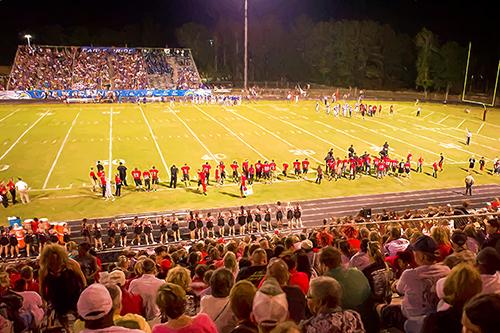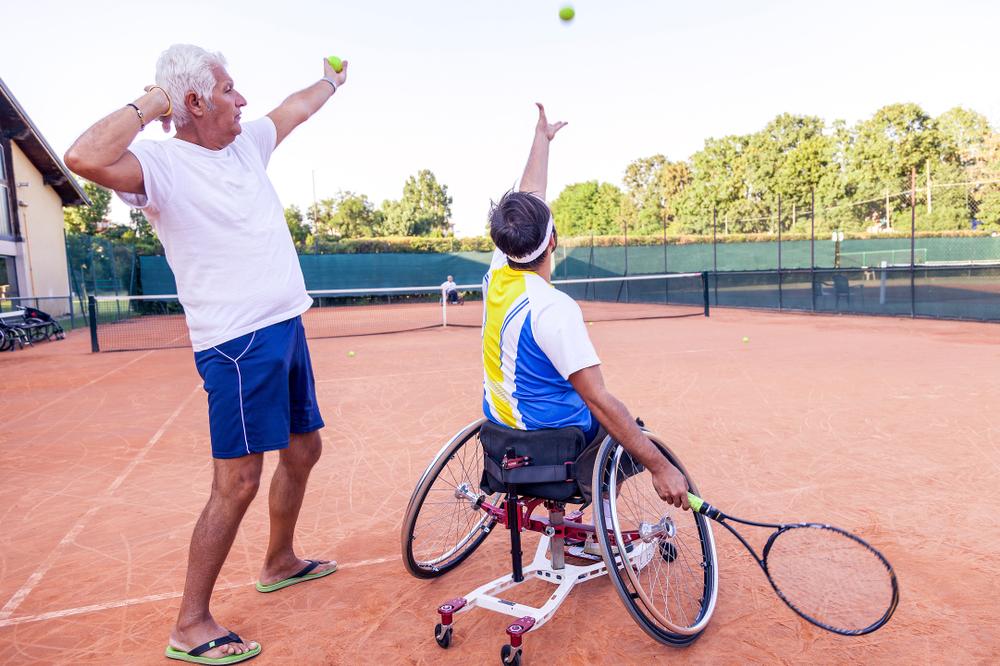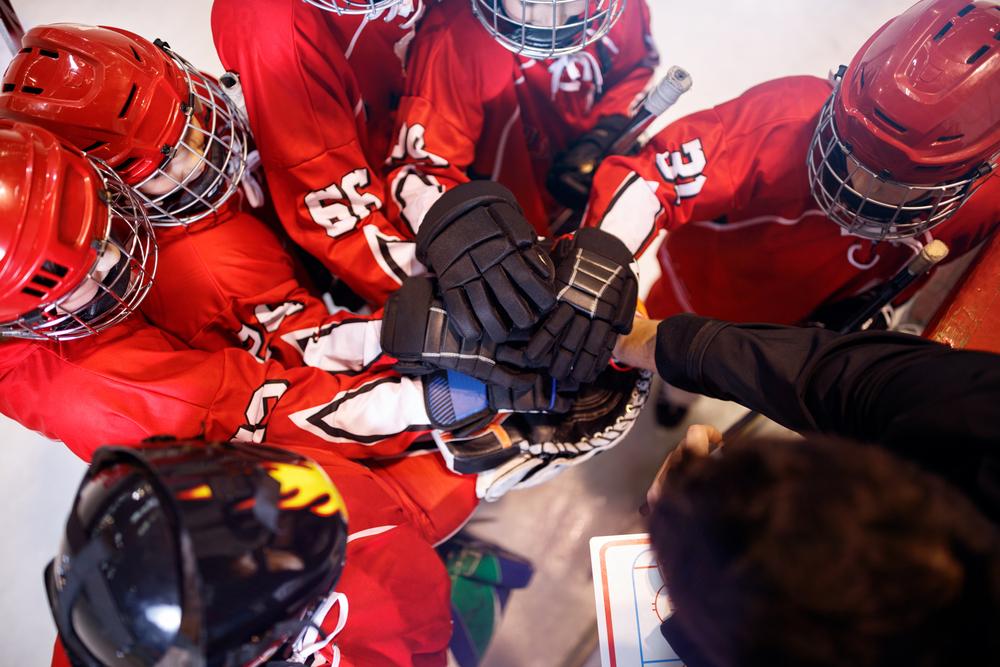As a Director of Athletics or Athletic Director at your school, you set the culture of the school’s athletic program, and you are in charge of ensuring that coaches and other athletic staff have the resources they need to thrive. This is especially important in an era when coaching staff and referees often feel overworked and lacking in both emotional and practical support.
Here, Vicki Vaughan, Director of Athletics at The Colorado Springs School and a longtime contributor to TrueSport curriculum, shares a few ways that an athletic director can best help coaches and referees thrive.
Be clear about expectations and values for your program
 Being part of a TrueSport style of culture means having strong core values around sportsmanship, character building and life skills, and clean and healthy performance. Using those three cornerstones, you can create a set of values and expectations for your coaches and referees with regards to fair play, treatment of athletes, and what really matters to the athletic department. Vaughan notes that for some schools, winning might be a higher-priority value than participation, for example. Determining what matters most to your school will inform everything from how auditions and tryouts are run to how teams are selected and how practice space is prioritized. Being upfront and open about these values will help your coaches make choices that are aligned with your program, as well as make it easier for you to support their efforts.
Being part of a TrueSport style of culture means having strong core values around sportsmanship, character building and life skills, and clean and healthy performance. Using those three cornerstones, you can create a set of values and expectations for your coaches and referees with regards to fair play, treatment of athletes, and what really matters to the athletic department. Vaughan notes that for some schools, winning might be a higher-priority value than participation, for example. Determining what matters most to your school will inform everything from how auditions and tryouts are run to how teams are selected and how practice space is prioritized. Being upfront and open about these values will help your coaches make choices that are aligned with your program, as well as make it easier for you to support their efforts.
Ask what they need and set clear protocols for those needs
Tasks like booking fields and gym space for practices are obviously part of an Athletic Director’s job, but actually doing this part of the job is much more complicated than it may seem. Coaches are almost certainly going to have conflicts with other coaches as teams vie for practice space, and referees are often stretched between sports or competitions. Your calendar should be coordinated to the best of your abilities, and to do this, it’s helpful to set early, simple protocols around submitting practice and competition space requests, transportation needs, and any other administrative details. This way, rather than having some coaches provide you a schedule in July while others wait until October, you have a deadline and a format that makes it easy to allocate resources, supporting each coach in the way that they require. Referees should also know how to submit schedule requests as early as possible. Make it as simple as possible for coaches and referees to help themselves by helping you!
Offer regular check ins
 Communication is key, says Vaughan. And that doesn’t just mean a single meeting at the beginning of the school year and an occasional memo or email. It means creating simple and easy ways to regularly communicate with you one-on-one, and with the department as a whole. Again, having a clear set of expectations around communication is optimal when it comes to supporting your staff. Will you respond to every email within 24 hours? Do you have regular ‘office hours’ for coaching staff, volunteers, and referees to meet with you one-on-one? Make it clear how coaches and referees can get in touch with you when needed. You may also want to institute more regular ‘town halls’ for coaching and athletic staff throughout the season, allowing coaches a chance to share their experiences and expertise with each other, discuss problems, and brainstorm solutions.
Communication is key, says Vaughan. And that doesn’t just mean a single meeting at the beginning of the school year and an occasional memo or email. It means creating simple and easy ways to regularly communicate with you one-on-one, and with the department as a whole. Again, having a clear set of expectations around communication is optimal when it comes to supporting your staff. Will you respond to every email within 24 hours? Do you have regular ‘office hours’ for coaching staff, volunteers, and referees to meet with you one-on-one? Make it clear how coaches and referees can get in touch with you when needed. You may also want to institute more regular ‘town halls’ for coaching and athletic staff throughout the season, allowing coaches a chance to share their experiences and expertise with each other, discuss problems, and brainstorm solutions.
Connect them with experts
As Athletic Director, your job is already busy, admits Vaughan. But small things like bringing in a sports dietitian with an expertise in assessing symptoms of REDs or disordered eating patterns to speak to coaching staff can make a big difference. Ideally, your town hall meetings should feature a short presentation from an expert like a dietitian, sports psychologist, or physical therapist to enhance coach knowledge. Make it clear that coaches aren’t expected to know everything, nor should they try to play psychologist, nutritionist, physical therapist, and sports medicine expert with their athletes. Coaches should also know to come to you for recommendations for experts when they’re dealing with certain issues, and they should feel confident that you’ll be able to connect them to expertise that they need.
Be their advocate
 You will likely deal with tricky situations involving parents of your students or of students from competing school districts, as well as other coaches from different schools during your tenure as Athletic Director, says Vaughan. And in these cases, it’s important to be an advocate first for your student-athletes, but second, for your coach. If a parent is complaining about a coach who isn’t giving a child ‘enough’ playing time, you may need to advocate for the coach—assuming that the coach is adhering to your program’s values and expectations, of course. Similarly, in heated moments during games and competitions, you may need to step in if a referee is being treated poorly by parents or coaches. Being prepared to deal with conflict is part of your role in supporting coaches and referees.
You will likely deal with tricky situations involving parents of your students or of students from competing school districts, as well as other coaches from different schools during your tenure as Athletic Director, says Vaughan. And in these cases, it’s important to be an advocate first for your student-athletes, but second, for your coach. If a parent is complaining about a coach who isn’t giving a child ‘enough’ playing time, you may need to advocate for the coach—assuming that the coach is adhering to your program’s values and expectations, of course. Similarly, in heated moments during games and competitions, you may need to step in if a referee is being treated poorly by parents or coaches. Being prepared to deal with conflict is part of your role in supporting coaches and referees.
Stay in the know
Vaughan says that boundaries are the trickiest things to set as Athletic Director because on one hand, you should be present for your coaching and referee staff regularly. It’s also important that you show up to assess how things are going rather than relying solely on reports from staff. However, you don’t need to be at every single game or meet, says Vaughan. Establish a routine that allows you to check in periodically, especially for coaches and referees who are dealing with tricky issues around students, staff, or parents. Coaches and staff appreciate seeing you take an interest in the teams, and that show of support goes a long way—even if it’s only one game per season.
_____________________
Takeaways
As athletic director, you’re able to both strengthen and support coaches and referees, beyond simple scheduling and basic day to day operations. Prioritize communication, set clear expectations and processes, and become an advocate for your staff.



